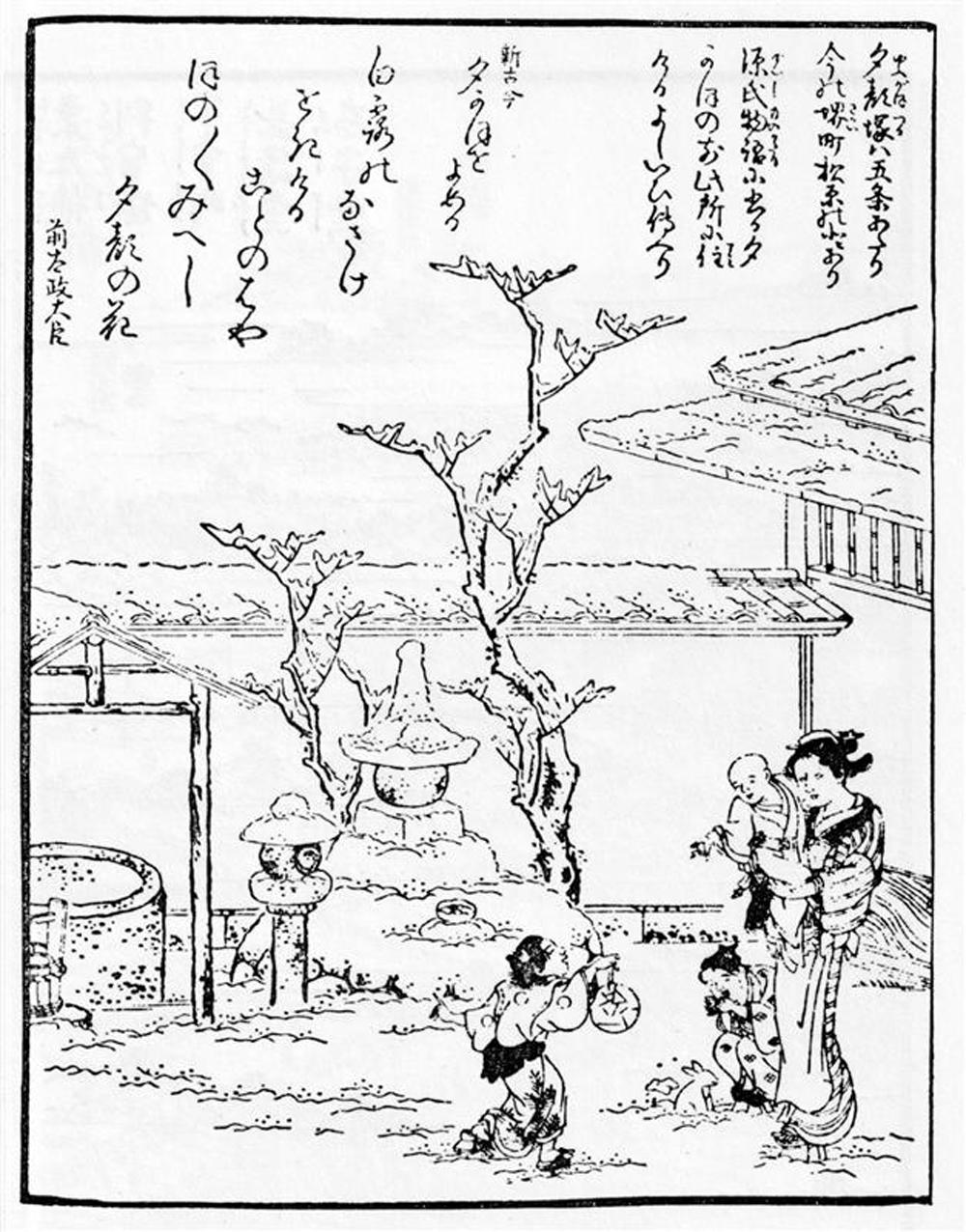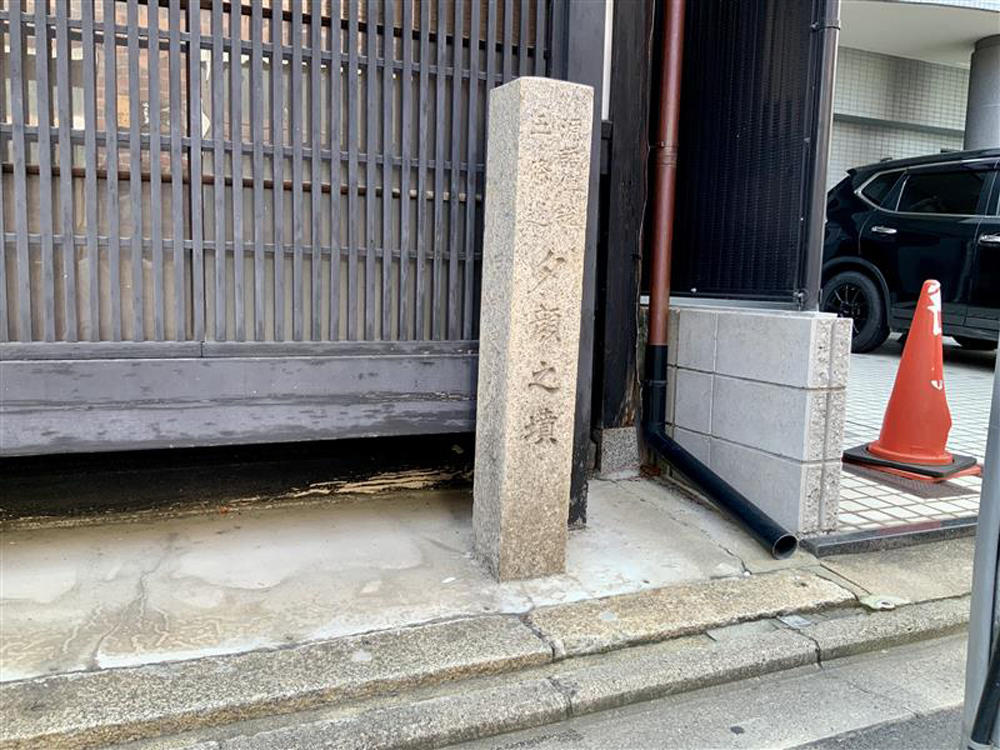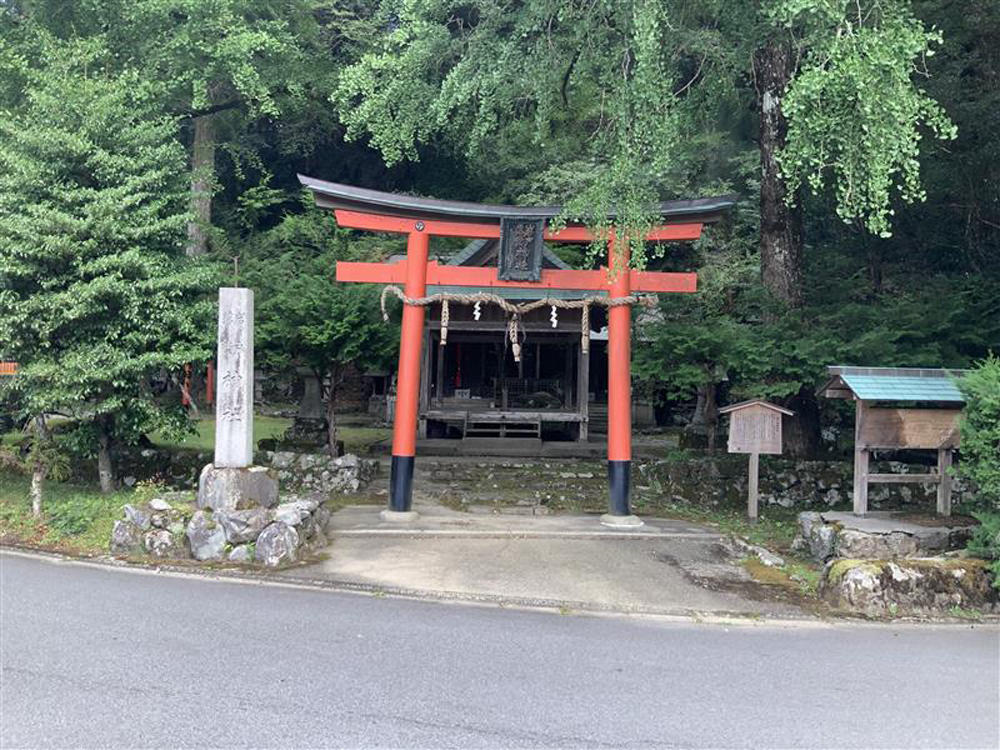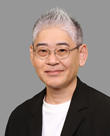Various Historical Sites Related to The Tale of Genji
—How did people in the past read The Tale of Genji?
Terumasa Nakagawa/Professor, Faculty of Letters, Chuo University
Area of Specialization: Classical Japanese Literature (Literature in the Heian Period)
1. Introduction
The Taiga drama entitled "Hikaru Kimi E" (Dear Radiance) began airing on NHK in January 2024. The main character is of this drama is Murasaki Shikibu, who was the author of The Tale of Genji, which is a long story composed of 54 volumes that was written approximately 1,000 years ago. Currently, many commentary books and manga related to Murasaki Shikibu and The Tale of Genji are lining the shelves of bookstores in time for the start of the Taiga drama. In this article, I will explain about some slightly mysterious ancient ruins related to The Tale of Genji, which are also discussed in those commentaries.
2. Real readers mourn the death of a fictional character
When a person dies, people who were part of their life hold a funeral and erect a grave for them. This is a very common custom. However, what if the deceased individual was a character in a story? In fact, if you trace the history of fandom for The Tale of Genji, you will find that there is a grave that may have been built by passionate fans. This is the grave of Yugao.
Yugao appears at the beginning of The Tale of Genji as the lover of Hikaru Genji. The love story between Hikaru Genji and Yugao begins in the Yugao Chapter when Hikaru Genji visits his nanny's house in Gojo and is approached by Yugao, who lives next door and reads a beautiful poem to him. Hikaru Genji gradually becomes attracted to Yugao, who never reveals her true nature, and eventually becomes her lover. However, one night, while the two were consummating their love, Yugao was killed by an evil spirit. Due to her dramatic death, Yugao captivated the hearts of many readers and was featured in Noh plays and other secondary works. Some of those readers mourned Yugao's death and built a grave for her. This is a brief summary which commentaries give for the creation of Yugao's grave.

● Grave of Yugao
Miyako Meisho-zue (published in 1780)
From Nihon Meisyo Fuzoku-zue No. 8 (Kadokawa Shoten, 1981)
3. Grave built by fans of The Tale of Genji
The first mention of Yugao's grave in literature was in Kyosuzume, which was written by Ryoi Asai in the Edo Period (published in 1665). Since then, Yugao's grave has been featured in various topographies and historical materials, thus indicating that the grave was a fairly famous historical site even hundreds of years ago. Today, the grave still stands in a private residence in Yugao Town in Shimogyo Ward, Kyoto City. This location is one of the assumed locations of Yugao's house which I mentioned above. The grave can be easily reached by searching for "夕顔の墓 (Yugao's grave)" or "源語伝説五条辺夕顔之墳 (Legend of Genji: Yugao's grave near Gojo)" on Google Maps. However, Yugao's grave itself is not open to the public. If you are interested in viewing the grave, please refer to the images included in some commentary books on The Tale of Genji[ⅰ]. The grave is estimated to date from the Muromachi Period. The family which owns the residence where the grave is located is said to hold a memorial service for Yugao every year on September 16.

● Stone marker designating a place related to Yugao folklore (photograph by Terumasa Nakagawa)
I wonder what my readers think after having read my explanation thus far. Some readers may now view The Tale of Genji as an outstanding work which was loved by so many people that fans erected a grave to one of the fictional characters. At the same time, some readers may feel that it is very dubious to have a grave for a fictional character. Without a doubt, Yugao's grave is indeed very dubious.
The cause of the dubious nature of the grave lies in the confusion between fiction and reality. For example, Kigin Kitamura left the following comment regarding the grave of Yugao.
源氏物語五十四帖の寓言(ぐうげん)なれば、いかで其跡といふ所あるべき。
Translation: Since the 54 chapters of The Tale of Genji are a fictional story, how could the house where Yugao lived and grave where she is buried exist in the real world?"
Kigin Kitamura, Tsuginefu (1686)
Indeed, as stated by Kigin, regardless of the appeal with which the character Yugao is depicted, she is nothing more than an inhabitant of a fictional world. Naturally, there can be no trace of her life in the real world. However, it is strange that this phenomenon of an intersection between fiction and reality in regard to the characters of The Tale of Genji also applies to those other than Yugao. Around Hasedera Temple in Nara Prefecture, there is a hermitage where Tamakazura, the daughter of Yugao, is said to have lived. The grave of Tamakazura also exists in the same location[ⅱ]. In Kita Ward, Kyoto Prefecture, there is a shrine dedicated to the deity Ochiba no Miya, who is also a character in The Tale of Genji[ⅲ]. Furthermore, there were people in Nishi Ward, Kobe City who were said to be descendants of Akashi-no-Nyudo[ⅳ]. In the first place, why do these dubious legends exist in various places? This is because The Tale of Genji was once connected to reality based on a different concept than what has been discussed so far. That concept is "based sources".

● Iwato Ochiba Shrine is dedicated to the deity Ochiba no Miya. (Photograph by Terumasa Nakagawa)
4. Another folklore related to the grave of Yugao
"Based sources" are historical facts (actual places, people, events, etc.) that authors use as materials when writing their work. At first glance, this explanation may make "based sources" seem like a difficult concept, but it is not. For example, fans of anime sometimes discuss sacred place pilgrimages where they identify and visit the locations where their favorite anime takes place. Other fans may try to identify the actual people who the anime characters are modeled after. These trends are closely related to the concept of "based sources". In this way, the identification of "based sources" is research grounded on extremely simple questions--How did the author live? What did the author feel? How did the author reflect their experiences in their work?
The idea of "based sources" in the history of enjoying The Tale of Genji dates back to the Kamakura Period. Specifically, this idea states the following: "The Tale of Genji is "fiction" created by the author Murasaki Shikibu. However, it is more than a simply "fiction"; instead, it is a "fiction" created based on "reality."" Since then, research on The Tale of Genji has identified all kinds of "based sources", and it remains an important research topic even today.
Perhaps Yugao's grave was originally not built by a fan who loved the fictious character Yugao, but was an ancient site that was assigned the identity of Yugao's grave based on the concept of "based sources". I make this assumption because there is another important dubious legend in regard to Yugao's grave.
元来夕顔と称する女ありて、此所に住し、其塚なるを、紫式部之に因て、彼巻の趣向とする歟。
Translation: Perhaps Yugao's grave was originally the grave of a woman called Yugao who lived in this place, and the grave inspired Murasaki Shikibu as the motif for the Yugao Chapter of The Tale of Genji.
Sanshu Meisekishi by Hakukei (1702 Preface, published in 1711)
This quotation describes a legend that Yugao's grave was not the grave of Yugao who was a fictious character in The Tale of Genji; instead, it was the grave of a woman who was the model for Yugao. Of course, even though this legend has been espoused, believing that there was actually a model for the character Yugao is too much a flight of fancy. After all, a legend is just a legend. However, I feel that the concept of "based sources" surrounding Yugao's grave provides important hints for considering the origins of the other dubious legends mentioned earlier. Ochiba no Miya, who is said to be an enshrined deity, may have originally been referring not to Ochiba no Miya in the story, but to the woman who was the model for Ochiba no Miya. Furthermore, the people who are said to be the descendants of Akashi-no-Nyudo may have originally meant that they were descendants of the person who was the model for Akashi-no-Nyudo, rather than the fictious character Akashi-no-Nyudo.
The way to enjoy The Tale of Genji is not to simply read the original text. Instead, readers also learn about the traditions of various ancient sites. This is also enjoyable and adds a different flavor to the novel. This is because these ancient sites are imbued with the simple and pure love that readers in the ancient past had for The Tale of Genji. Yugao's grave can be described as an important historical site when considering the historical changes of the context of The Tale of Genji in the way that people in the past perceived the relationship between fiction and reality.
[ⅰ] Koyama, T., The Grave of Yugao: Created by the Pity of the Story Reader (Reading The Tale of Genji Through Characters (Volume 8): Yugao), Bensei Publishing, 2005, frontispiece, etc.
[ⅱ] Nakagawa, T., The significance of the hermitage of Tamakazura, the Ancient Ruins of "The Tale of Genji", and its historical evolution.:What did the people of Hase Temple think is and is not depicted in The Tale of Genji? (Chuo University Faculty of Letters Bulletin, Volume 133, February 2024)
[ⅲ] Nakagawa, T., In "The Tale of Genji", Which "Ono" did Ochibamiya move to? ― Iwato Ochiba Shrine and the three "Ono" (Chuo University Faculty of Letters Bulletin, Volume 129, February 2022)
[ⅳ] Kimura, H., Shrines and Temples (A Farming Village in a Big City: History and Folklore of Hasetani Town in Nishi Ward, Kobe City), Izumi Shoin, 1994; Fukushima, S., Names of Legendary Places (Walking Through The Tale of Genji), JTB Publishing, 2008)
Terumasa Nakagawa/Professor, Faculty of Letters, Chuo University
Area of Specialization: Classical Japanese Literature (Literature in the Heian Period)Terumasa Nakagawa was born in Fukui Prefecture in 1972. He holds a Ph.D. in literature. He graduated from the Faculty of Education, University of Fukui in 1995. He completed the Master’s Program in the Graduate School of Education, University of Fukui in 1997. He completed the Doctoral Program in the Graduate School of Humanities, Osaka University in 2000. Before assuming his current position in 2020, he served as a Lecturer, Associate Professor, and Professor in the Faculty of Literature, Kogakkan University.
His research theme is narrative literature centered on the Heian Period. He is particularly interested in the history of enjoyment of The Tale of Genji, such as the influence that the work had on later generations.
His written works include The Illusion of The Tale of Genji (Bensei Publishing), Reading The Tale of Genji Theory Through Themes (Volume 4), (co-authored, Bensei Publishing) and more.









